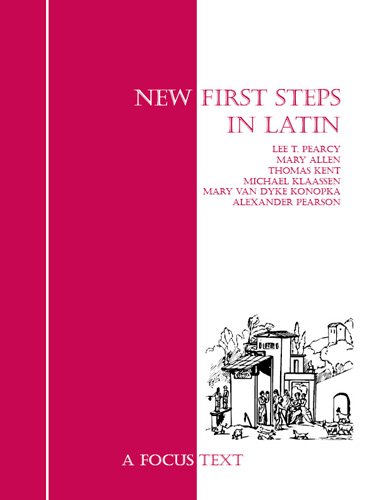Customer Services
Copyright © 2025 Desertcart Holdings Limited
Desert Online General Trading LLC
Dubai, United Arab Emirates


New First Steps in Latin (New Steps) (Latin Edition)
S**U
Five Stars
Very useful for my kids who are struggling with learning Latin
P**I
Straightforward, uncomplicated, efficient
This book exploits an important fact: Latin is a grammar and a vocabulary. Trying to teach both intensively at the same time leads to confusion and demoralization among most students. Look at the vocabulary lists in Latin via Ovid, for example, or in the Ecce Romani series: at the same time as students are attempting to learn the unfamiliar terrain of case endings, conjugations, participles, infinitives, etc., they are expected to learn 25 to 30 words of vocabulary per week.Moreover, Latin vocabulary has been so productive of English derivatives that it is the easier of the two. NFSiL book 1 takes advantage of this idea by focusing on the grammar first, giving only a skeleton of vocabulary on which to hang the grammatical instruction. Every aspect of the grammar that I would want in a first-year course is here, and a good starter vocabulary of 250 words or so. The authors avoid irregular verbs except for sum and do not introduce pronouns at all (I would have introduced the first and second personal pronouns).A few recommendations for future editions:1) The last two chapters of the text treat the fourth conjugation present and perfect passive systems: these should be collapsed into the chapters on the third -io verbs' passive systems. The two groups of verbs behave nearly identically and only four fourth conjugation verbs are introduced in the entire text. Moreover, the final chapter, on the perfect passive system of the fourth conjugation, does not introduce any new vocabulary at all. Those two lessons are superfluous. The same should also be done with the two earlier chapters on the present and perfect active systems of the fourth conjugation. This will save four chapters.2) The book needs occasional review chapters, as is done in NFSiL book 2.3) While I like that the stories in the back deal with Roman myth and early history, they need to be a bit better. Stories that are supposed to be read after chapters on the passive voice are disappointingly free of passive forms. Perhaps they can be worked into review chapters.4) Reduce the English-to-Latin sentences by half5) Add a greater variety of exercises.All in all, a very good idea. A high school course proceeding through this text and its two sequels in two or three years would prepare students for Caesar and Catullus in year four. Pair it with a good text on Roman history and a few mini-units on mythology, and you have a good, INEXPENSIVE, Latin program.One note: the book isn't a stand-alone. A teacher would need to use an age-appropriate book on Roman history and culture to bring life to the subject.
K**E
Use with a teacher who can proofread the spelling or with many alternative references
I like the idea of a set of Latin texts with a very limited vocabulary so students may get the grammar down first. The problem is that if the book concerns itself with teaching the different forms of words when they are used for different purposes...I would hope the book would be proof read to the point where the spelling and that includes accents and macrons are absolutely correct.If the authors have a valid reason to disagree with the spellings used in the usual standard student textbooks, they need to clearly explain why and give references.It is disappointing to have to proofread these books, and alter the spelling to standard before allowing students any access.Example Page 4. The third person stem does not have a macron in several iterations. This differs from the spelling in Henle and Wheelock. It changes the pronunciation of the vowel and would shift the accent of the words involved. That set of errors ALONE is enough to cause the book and the set to need to be proofread before use by students.Its akin to finding misspelled words in a student book teaching spelling.
Trustpilot
2 weeks ago
2 months ago